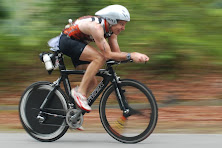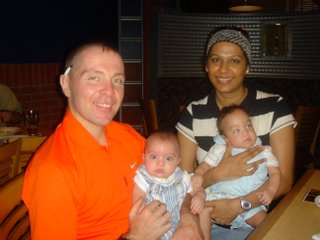 Paul Huddle’s strength as a young pro in the early days of triathlon was the run, but he never realised how important the bike and swim were to a good marathon in Kona until he asked his housemate, Mark Allen, why he was so religious about making every morning swim workout. “He said if his swimming was as fit as possible, it would have minimal impact on the rest of his race,” Huddle recalls. “It didn’t get me to swim much more, but I thought about that concept as it applied to my marathon at Ironman. Since cycling was my weakness to begin with, I started to think that maybe I was focused too heavily on my strength, which was running. If I were to run a better marathon, maybe cycling was the answer. I hadn’t come close to what I felt was my potential in the marathon of an Ironman and, since I’d already been focused on running since that was what I knew, I decided to become a cyclist. I reasoned that if 180K didn’t impact me, perhaps I could maximise my running abilities. I was right.
Paul Huddle’s strength as a young pro in the early days of triathlon was the run, but he never realised how important the bike and swim were to a good marathon in Kona until he asked his housemate, Mark Allen, why he was so religious about making every morning swim workout. “He said if his swimming was as fit as possible, it would have minimal impact on the rest of his race,” Huddle recalls. “It didn’t get me to swim much more, but I thought about that concept as it applied to my marathon at Ironman. Since cycling was my weakness to begin with, I started to think that maybe I was focused too heavily on my strength, which was running. If I were to run a better marathon, maybe cycling was the answer. I hadn’t come close to what I felt was my potential in the marathon of an Ironman and, since I’d already been focused on running since that was what I knew, I decided to become a cyclist. I reasoned that if 180K didn’t impact me, perhaps I could maximise my running abilities. I was right.I doubled my cycling volume and my marathon time became competitive. On top of that, my bike split also improved.”
Most top-end Ironman coaches agree that the stronger you become on the bike, the better able you’ll be to run to your potential in an Ironman. “Just because an individual athlete has shown brilliance in one or all of the disciplines at another distance or as a single-sport athlete, it’s no guarantee of success in Kona,” Huddle says. “How many sub-2:20 marathoners have come to Kona and gone five hours? I can name five off the top of my head.”
So bike more and run off the bike regularly in your training. “If you don’t have a strong running background, consider double runs as a safer way to boost running volume,” says Huddle. “One hour after a long ride is as long [a brick workout] as I’d suggest.” Long runs and higher intensity runs should be done fresh to avoid injury or necessitating a long recovery, but they are an irreplaceable component of high-level Ironman run training.
And how long should your longest run be? Running expert Bobby McGee says anything over two or two- and-a-half hours is counterproductive. What you want to focus on, he says, is quality and leg strength. McGee has his athletes do one long run every two weeks and in between an intermediate distance run with a quality finish. “Fast finish long runs or runs with strides toward the end are super ways to reduce recovery time and teach athletes to finish strong,” he says. He also advocates running workouts that build your functional strength and mechanical efficiency: springing up a steep hill for 30 to 45 seconds at a time; hill interval workouts with 10 1.5- to 3-minute repeats up a moderate hill focusing on good form; and the bread-and-butter race- pace intervals off the bike. “I’d keep them short, fresh and plentiful,” says McGee, “like 200-meter to 1-mile reps at race pace, fresh and off the bike.”
McGee also has his Ironman athletes do their long run sessions with fewer calories until they can manage more than two hours on water and electrolytes alone. Why? Reducing the need to feed reduces the mechanical stresses on the gut and makes for a higher likelihood of a clean run, especially in the heat,” he says.
He also trains his athletes to walk fast and long, build- ing them up to “some really nasty, gnarly four- to six-hour hikes. The muscle endurance and fat-burning skills gained here are hugely beneficial to the age grouper,” McGee says. “The walk/run method is a total no-brainer. We have five years of anecdotal proof that this is the way to go fast, and I’d hazard a guess that even sub-three-hour [marathon] runners could benefit from this.
Simon Says: -
I have to say that for the less talented distance runners amongst us, and I include myself in that, I think that anything up to 3 1/2 hours for the long run is beneficial and quite honestly imperative. It's about training the mind as much as the body. Also we age-groupers travel a lot slower than the pros so our 3 1/2 hours is probably their 2 1/2 hours. I certainly wouldn't manage a nonstop run in an Ironman on long runs of only 2 1/2 hours.
The main point of the article though is to train on your weakness (Paul Huddle focused on the bike as it was his weakness), I definitely intend to make myself a runner when I get back from my shoulder injury in a few weeks. My bike always takes care of itself and my swim is never going to be brilliant but I always put the time in so I see huge returns in becoming a good distance runner. Time will tell.


No comments:
Post a Comment